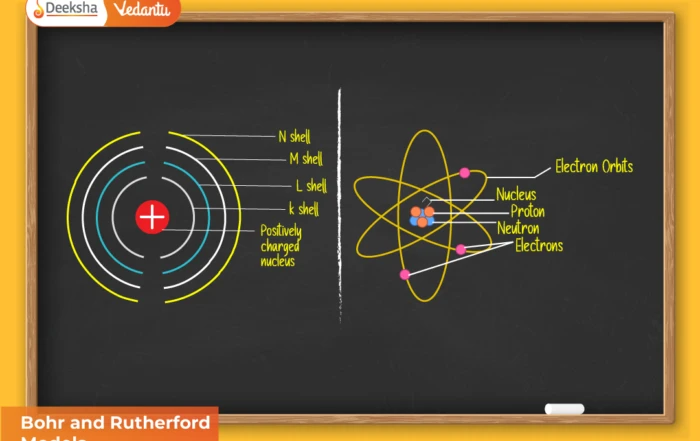
Introduction
Coordinate Geometry is one of the most powerful tools in mathematics, as it combines algebra and geometry. Among all the curves, the straight line is the simplest yet most fundamental concept. In this chapter, we study the different forms of equations of a line, conditions for parallelism and perpendicularity, methods of finding distances, and angle between lines.
A line in the plane is a locus of a point that moves in such a way that it satisfies certain linear conditions between its coordinates. Understanding the properties of straight lines builds the foundation for later topics like circles, conic sections, vectors, and 3D geometry.
For board exams, questions on straight lines usually carry 8–10 marks, often asking for equations of a line, slope-based problems, or distance calculations. In JEE and KCET, 2–3 objective questions appear, focusing on slope, perpendicularity, intercepts, and distance.
9.1 Slope of a Line
The slope (m) of a line is defined as the tangent of the angle θ made by the line with the positive direction of the x-axis.
m = tan θ
Formula for slope between two points
If two points are given: P(x₁, y₁) and Q(x₂, y₂),
then slope of line PQ = (y₂ – y₁) / (x₂ – x₁), provided x₂ ≠ x₁.
- If x₂ = x₁, line is vertical → slope undefined.
- If y₂ = y₁, line is horizontal → slope = 0.
Special slopes
- Positive slope → line rises to the right.
- Negative slope → line falls to the right.
- Zero slope → horizontal line.
- Undefined slope → vertical line.
Example 1: Find the slope of the line passing through (–2, 3) and (4, 5).
m = (5 – 3)/(4 – (–2)) = 2/6 = 1/3.
9.2 Various Forms of Equation of a Line
Depending on given data, we can represent a line in multiple forms.
1. Slope–Intercept Form
Equation: y = mx + c
- m = slope
- c = y-intercept (point where line cuts y-axis).
Example 2: Equation of line with slope 2 and y-intercept –3 → y = 2x – 3.
2. Point–Slope Form
Equation: y – y₁ = m(x – x₁)
- Line passes through (x₁, y₁) and slope m.
Example 3: Equation of line through (2, 3) with slope 5 → y – 3 = 5(x – 2).
3. Two-Point Form
Equation: (y – y₁)/(y₂ – y₁) = (x – x₁)/(x₂ – x₁)
Useful when two points on line are known.
Example 4: Line through (1, 2) and (3, 4) → (y – 2)/(4 – 2) = (x – 1)/(3 – 1).
4. Intercept Form
Equation: (x/a) + (y/b) = 1
- a = x-intercept
- b = y-intercept
Example 5: Line cutting x-axis at 4 and y-axis at 3 → x/4 + y/3 = 1.
5. Normal Form
Equation: x cos α + y sin α = p
- p = perpendicular distance of line from origin
- α = angle of perpendicular with x-axis
Example 6: Line at distance 5 from origin making 30° with x-axis → x cos 30° + y sin 30° = 5.
6. General Form
Equation: ax + by + c = 0
- Standard form for algebraic manipulations.
- Can be reduced to slope-intercept by rearranging.
Example 7: Line 3x + 4y – 5 = 0 → slope = –a/b = –3/4.
9.3 Angle Between Two Lines
If two lines have slopes m₁ and m₂, the angle θ between them is:
tan θ = |(m₁ – m₂) / (1 + m₁m₂)|
- Parallel lines: m₁ = m₂
- Perpendicular lines: m₁m₂ = –1
Example 8: Find angle between lines y = 2x + 3 and y = –½x + 5.
m₁ = 2, m₂ = –½ → m₁m₂ = –1 → lines perpendicular.
9.4 Distance of a Point from a Line
For point P(x₁, y₁) and line ax + by + c = 0,
distance = |ax₁ + by₁ + c| / √(a² + b²).
Example 9: Distance of (3, 4) from 3x – 4y + 5 = 0 →
= |3(3) – 4(4) + 5| / √(3² + (–4)²) = |9 – 16 + 5| / 5 = 2/5.
9.5 Conditions of Collinearity
Three points A(x₁, y₁), B(x₂, y₂), C(x₃, y₃) are collinear if:
(y₂ – y₁)/(x₂ – x₁) = (y₃ – y₂)/(x₃ – x₂).
Example 10: Check if (1, 2), (3, 6), (5, 10) are collinear.
Slope AB = (6 – 2)/(3 – 1) = 4/2 = 2
Slope BC = (10 – 6)/(5 – 3) = 4/2 = 2 → Yes, collinear.
9.6 Family of Lines
- Passing through intersection of two lines:
If L₁ = 0 and L₂ = 0 are two lines, any line through their intersection is:
L₁ + λL₂ = 0, where λ is constant. - Concurrent lines:
Three or more lines are concurrent if they meet at a single point.
9.7 Applications in Exams
- CBSE Boards: Expect derivations of slope forms, problems on distance of point from line, collinearity tests, and equations in intercept/normal form.
- JEE Mains: Often asks quick slope-distance problems, family of lines, or conditions of perpendicularity.
- KCET/COMEDK: MCQs check angle between lines, intercepts, and distance formulas.
Solved Examples (Mixed Level)
Example 11: Find equation of line perpendicular to 2x + 3y – 4 = 0 and passing through (2, –1).
Slope of given line = –a/b = –2/3.
Perpendicular slope = 3/2.
Equation: y + 1 = (3/2)(x – 2).
Example 12 (Board type): Find the equation of the line with x-intercept = 3 and parallel to 2x – y + 7 = 0.
Slope of given line = 2.
Equation with slope 2 and x-intercept 3: y – 0 = 2(x – 3) → y = 2x – 6.
Example 13 (JEE style): Find the equation of line passing through the intersection of x + y – 1 = 0 and 2x – 3y + 5 = 0 and parallel to 3x + 4y = 0.
Equation through intersection = (x + y – 1) + λ(2x – 3y + 5) = 0.
Slope of required line = –3/4.
Reduce and solve for λ → get required line.
Example 14 (KCET): Find equation of line parallel to y-axis and passing through (4, 7).
Equation: x = 4.
Example 15 (Advanced): Prove that the distance between parallel lines ax + by + c₁ = 0 and ax + by + c₂ = 0 is |c₂ – c₁|/√(a² + b²).
Practice Problems
- Find slope of line joining (–1, 2) and (3, 4).
- Write an equation of line through (2, –1) parallel to x-axis.
- Equation of line with slope 5 and passing through origin.
- Distance of (2, 3) from line 4x – 3y + 7 = 0.
- Find angle between x + y = 1 and x – y = 2.
- Prove (1, 2), (3, 6), (5, 10) are collinear.
- Equation of line passing through intersection of x + 2y – 3 = 0 and 3x – y + 5 = 0, parallel to x-axis.
FAQs
Q1. What is the most common equation of a line?
y = mx + c.
Q2. How to find distance between parallel lines?
Use formula |c₂ – c₁|/√(a² + b²).
Q3. Can slope be infinite?
Yes, for vertical lines (parallel to y-axis).
Q4. What is the difference between slope-intercept and intercept form?
Slope-intercept uses slope and y-intercept, while intercept form uses both x and y intercepts.
Marks Distribution
- Boards (CBSE/State): 8–10 marks (long + short problems).
- JEE Main: 1–2 questions (2–4 marks).
- JEE Advanced: 1 mixed problem (4 marks).
- KCET/COMEDK: 2–3 questions (2–6 marks).











Get Social